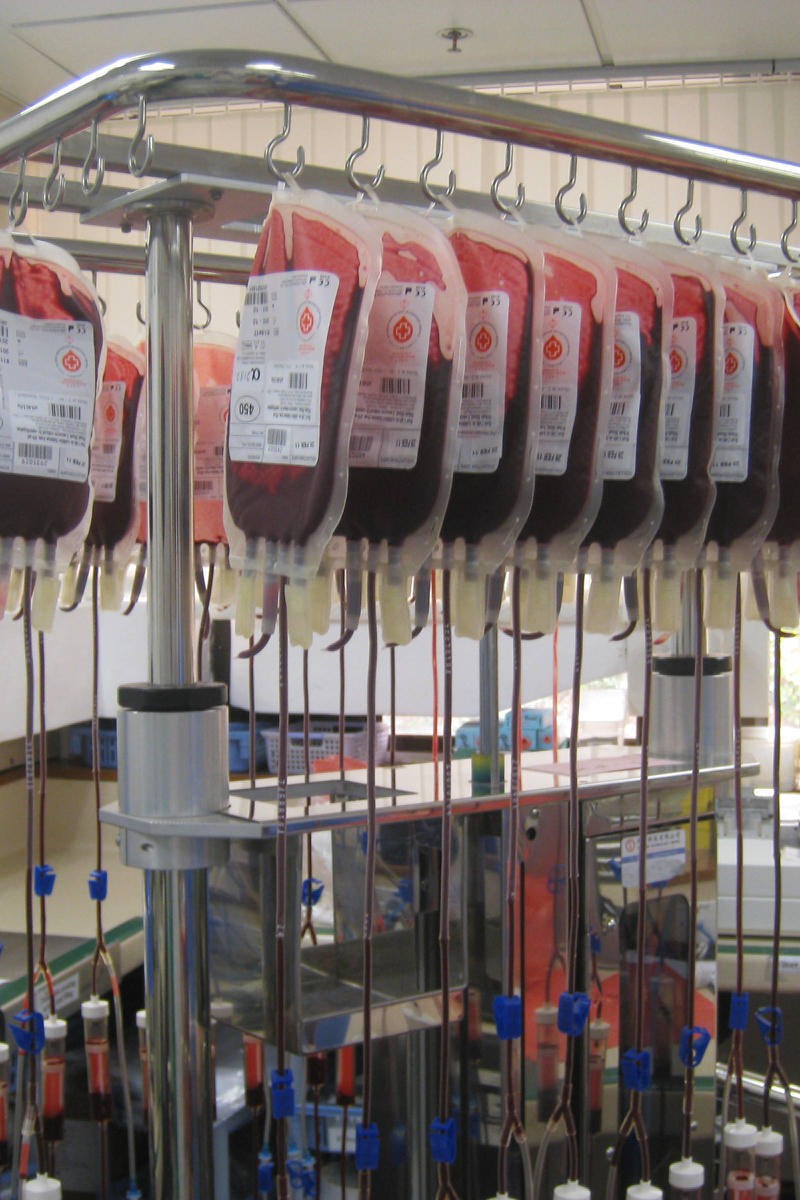
What really goes on at the Red Cross when you donate blood
The Red Cross talks to Young Post about blood: how it gets donated, and all the things that happen to it before it finally goes into a patient who needs it
 Blood bags on a rack awaiting processing.
Blood bags on a rack awaiting processing.The first step in donating blood at a Red Cross donor centre is providing your basic information: name, height, weight, contact information, and other details. Once that's done, the staff will prick your finger to check your haemoglobin level, the part of your blood that carries oxygen to your organs. This test will tell if your blood is suitable for donation, and checks if you have anaemia (or low iron) and other conditions.
After that, there is an interview with a nurse. To check your general health, they will do some basic measurements, checking your blood pressure, pulse and other things.
Then comes the actual procedure: the skin disinfection and the needle in the arm.
Once the needle is in, all that's left for a donor to do is sit and wait for their blood to pump out.
From all the blood that a person donates, a portion will be set aside for testing.
After that, they are sent to a resting area to sit and recover (with some free snacks and drinks) before being released. The entire process takes around 45 minutes.
Dr Jennifer Leung Ngar-sze, Associate Consultant, Hong Kong Red Cross Blood Transfusion Service, talked to Young Post to explain the part most people don't see: what happens to the blood after it leaves the donor.
The blood is taken to the Blood Transfusion Service headquarters at King's Park, where the portion that was set aside is screened for blood type, and tested for contamination, and for blood-borne diseases, such as HIV and hepatitis.
Then the blood is placed in a centrifuge, a machine that spins the blood around, separating it into its components, namely the red blood cells, which deliver oxygen around the body; platelets, which make blood clot, stopping a cut from bleeding; and plasma, which also helps with clotting. These individual products are then sorted, labelled, stored, and sent to blood banks in hospitals.
Storing these separate products is not as easy as just putting them all in a freezer. Red blood cells have to be stored between 2 to 6 degrees Celsius, and they expire in 42 days. Plasma is stored at minus 30 and lasts for a year, while platelets are stored at room temperature, but they must be constantly stirred to keep from clumping, and only last five days.
It is important to have a steady supply of blood to treat patients, says Leung. "A transfusion is commonly used to stop bleeding from injury, illness, or for post-transplant patients."
The Red Cross wants 1,100 donors a day. "We can't make mass appeals all the time. We prefer a steady rate of donors, since blood products can't be stored indefinitely," Leung says. "If the blood is donated but unused it just goes to waste, so we work with hospitals to ensure a reserve and an adequate supply of blood."
Another problem the Red Cross faces is a rise in the demand for blood to treat illnesses. "Improvements in medicine mean some conditions can be treated now, and these treatments require blood," says Leung. "And because people are living longer, and we have an ageing population, this also increases the demand of blood for treatments."
This is made worse because there are fewer donors aged 16 to 20 years old.
The Red Cross says that the proportion of donors in that group has dropped from 24 per cent to 16 per cent in the past 10 years.
Leung wants teenagers to know how important it is to donate blood.
"There is no replacement for blood, we can't get it from a stone or something," she says.
"We hope young people will understand blood donation isn't a strange idea, and people really need blood. We hope that young donors will make a habit of it and become regular blood donors."
Visit www5.ha.org.hk/rcbts/enindex.asp for more information on how to donate.
